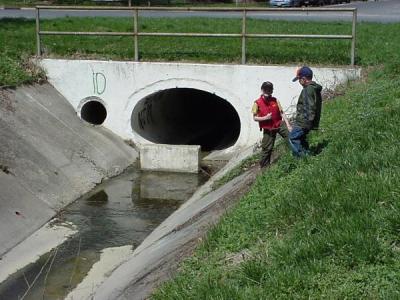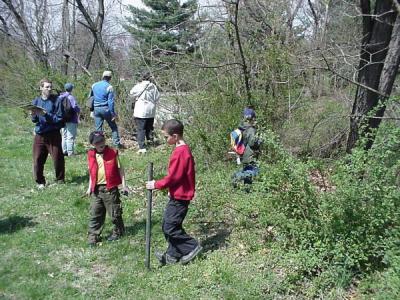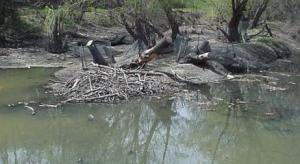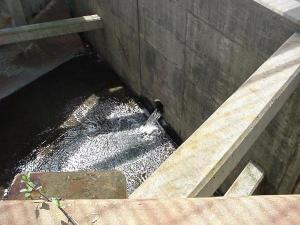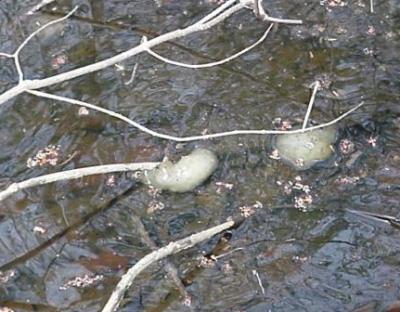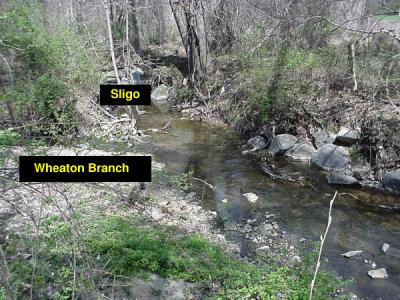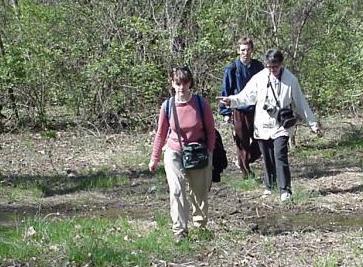|
Approaching the Beltway crossing, we found a small holding pond and plantings of winter holly and barberry designed to control runoff water from the highway. The area around the beltway is unfortunately also known for its trash: large amounts find their way from the highway to the creek. On the brighter side, swallows have taken to nesting on the underside of the bridge, proving the resourcefulness of nature's creatures!
Below the beltway and adjacent to Flora Lane, cold water flows down from a Metro station outlet and enters the creek. Chinquapin, river birch, and spring beauty all were discovered in this section. South of Sligo Creek golf course, which runs along the east side of Sligo Creek Park, we observed a memorial to Walt Penney, the bicyclist killed by a reckless driver along Sligo Creek Parkway.
Invasive yellow buckeye and yellow groove bamboo stands were found in just north of Colesville Road. Yellow groove bamboo can be distinguished from switchcane bamboo, which is native to the area, by the facts that yellow groove is taller, thicker in diameter, has yellow grooves running vertically, and has a crooked stem at its base. We also learned to distinguish grape vines from English Ivy by the appearance of the bark along the two vines. Directly north of Colesville Road is a section of the park in which a large vine removal effort was undertaken, with striking results.
|
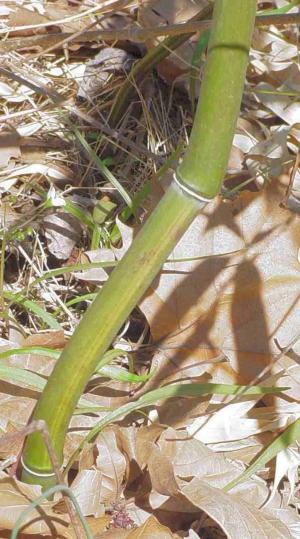
|



